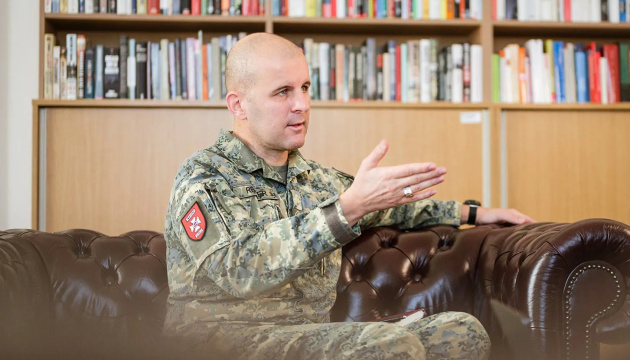
Thanks to well-organized and sustained funding for decentralized production on a large scale, Ukrainian combat units are constantly receiving new drones of various types, which have become key to Ukraine’s success and a true nightmare for Russian invaders.
Colonel Markus Reisner, head of the Officer Training Institute at the Theresian Military Academy, said this in a comment to Ukrinform’s correspondent, discussing Ukraine’s increased defense spending, including on drone production.
“The key to Ukraine’s success is its ‘drone army.’ Russian invaders are not facing tens of thousands of soldiers but hundreds of thousands of drones operated by military personnel from a safe distance. FPV drones are used at the tactical level, medium-range drones at the operational level, and long-range strike drones at the strategic level. Thanks to consistent funding and decentralized production, Ukrainian forces are continuously supplied with new drones,” Reisner noted.
He added that Ukraine’s nationwide network of drone production makes it “extremely difficult, if not impossible,” for Russian invaders to disrupt it. “Despite massive attacks on Ukraine’s critical infrastructure and defense-industrial complex, drone production continues to grow in both quality and quantity. This is a major problem, if not a nightmare, for Russian invaders,” the Austrian military expert added.
According to Reisner, the war in Ukraine is a “classic example of asymmetric warfare, where a side with significantly greater military power faces a smaller, more flexible, and technologically innovative force.”
“Ukraine has achieved impressive results in this regard and continues to make progress by integrating Western technologies and adapting flexibly to the ever-changing dynamics of the war, particularly in countering Russian maneuver groups and employing drones,” he said.
Reisner stressed that, given Russia’s much larger mobilization resources, Ukraine’s defensive war must rely on asymmetric actions and tactical flexibility, such as the successful use of maritime drones against Russia’s Black Sea Fleet.
“Classic factors like force, space, time, and information remain crucial in this war. Victory will go to those who can leverage advanced weapon systems to tilt these factors in their favor. A prime example is Ukraine’s success in using high-speed, long-range surface drones (force) with real-time situational awareness provided by the West (information) to push Russia’s Black Sea Fleet out of the western Black Sea (space) in just a few months (time). This is an undeniable success, and Russia has yet to find an effective response,” he said.
Another tool giving Ukraine an edge in asymmetric warfare is long-range UAVs, exemplified by Operation Spiderweb.
“With Western support, Ukraine has built a significant arsenal of long-range drones, enabling strikes not only on frontline targets but also on military facilities deep inside Russia. The most striking example is the attack and destruction of a significant number of Russian strategic bombers in early June 2025,” Reisner noted.
He also highlighted the use of artificial intelligence (AI) as “another decisive factor in the war.”
“AI is changing the course of hostilities. We already see drones operating in swarms, sharing data among themselves. Full autonomous interaction is only a matter of time. AI is also used to process satellite and aerial imagery, significantly reducing the detect-to-strike cycle, improving accuracy, and speeding up decisions. Ukraine employs AI to enhance the efficiency of Western-supplied weapons like HIMARS and strike drones, enabling precise trajectory calculations and targeting,” he explained.
Reisner stressed that the Russian-Ukrainian war demonstrates that “the ability to effectively use technologies like AI and drones can significantly influence the course of a conflict.” At the same time, fundamental principles of warfare — tactical flexibility and rapid response — “must not only be preserved but gain even greater importance.”
“The war between Russia and Ukraine is, in many ways, a testing ground for future warfare, where information technologies and digital confrontation will play a key role,” the Austrian expert concluded.
On July 31, President Volodymyr Zelensky signed a law increasing defense spending, including for drone production. Law No. 4561-IX “On the State Budget of Ukraine for 2025” provides an additional UAH 412.3 billion for the defense sector, with UAH 216 billion allocated for the procurement and production of weapons, military equipment, and drones.
Photo: militaeraktuell.at
Source: Ukraine's 'drone army' a nightmare for Russian invaders – Austrian military expert



